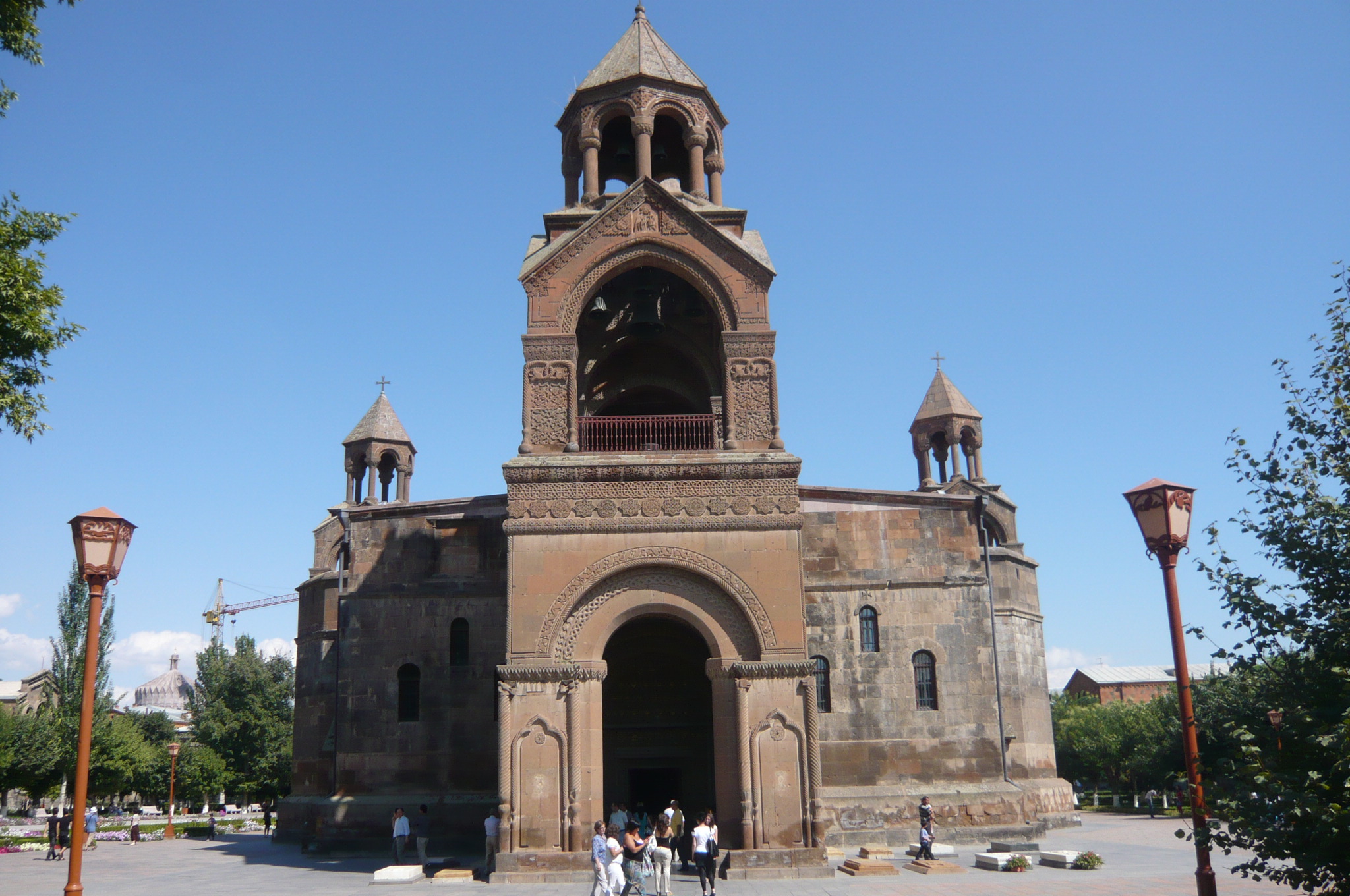Discover the pinnacle of personalized travel experiences with our concierge services, designed to elevate your journey to new heights. When you visit the breathtaking Echmiadzin Cathedral in Armenia, our dedicated team ensures that every aspect of your trip is seamlessly arranged, from guided tours to exclusive access. Our concierge services prioritize your comfort and convenience, allowing you to immerse yourself fully in the spiritual and historical wonders of this UNESCO World Heritage site. Experience Armenia’s sacred heritage with unparalleled ease and sophistication, making your visit to Echmiadzin Cathedral truly unforgettable. Let our concierge services transform your travel dreams into reality.
Nestled in the heart of Vagharshapat, just a short drive from Yerevan, the awe-inspiring Echmiadzin Cathedral is a testament to Armenia’s rich spiritual heritage and architectural prowess. As the mother church of the Armenian Apostolic Church and a UNESCO World Heritage site, this magnificent structure beckons travelers from around the globe to explore its hallowed grounds and immerse themselves in centuries of history.
A Glimpse into Armenia’s Christian Legacy
Echmiadzin Cathedral holds the distinction of being the oldest Christian cathedral in the world, with its foundations dating back to the early 4th century. Legend has it that Saint Gregory the Illuminator, the patron saint of Armenia, had a divine vision of Jesus Christ descending from heaven and striking the ground with a golden hammer. This vision inspired the construction of the cathedral on that very spot, marking the birth of Christianity as Armenia’s state religion.
The name “Echmiadzin” itself carries profound meaning, translating to “the descent of the Only Begotten.” This moniker is a constant reminder of the cathedral’s divine origins and significance in Armenian Christian history.
Architectural Marvel Through the Ages
While the original 4th-century structure has undergone numerous renovations and expansions over the centuries, Echmiadzin Cathedral continues to captivate visitors with its harmonious blend of architectural styles. The current cruciform plan and central dome, characteristic of Armenian church architecture, date back to the 5th century.
As you approach the cathedral, your eyes will be drawn to the intricate stone carvings adorning its exterior walls. These bas-reliefs depict scenes from biblical stories and Armenian history, offering a visual narrative that has withstood the test of time. The western facade, featuring a striking portico added in the 17th century, serves as a grand entrance to this sacred space.
Step inside, and you’ll be enveloped by an atmosphere of reverence and spirituality. The interior of Echmiadzin Cathedral is a masterpiece of Armenian religious art, with every surface adorned with vibrant frescoes, intricate mosaics, and ornate decorations. The central dome, supported by four massive pillars, creates a sense of soaring height and celestial connection.
A Living Center of Armenian Christianity
More than just a historical monument, Echmiadzin Cathedral continues to serve as the spiritual heart of the Armenian Apostolic Church. As the seat of the Catholicos of All Armenians, the supreme head of the church, it plays a vital role in religious ceremonies and national celebrations.
Visitors lucky enough to attend a Sunday service or special liturgy will witness the cathedral come alive with the haunting melodies of Armenian chants and the fragrant smoke of incense. The experience offers a profound glimpse into the living traditions of one of the world’s oldest Christian communities.
Adjacent to the main cathedral building, the Echmiadzin Cathedral Museum houses an impressive collection of religious artifacts and historical treasures. Here, you can marvel at intricately carved khachkars (Armenian cross-stones), centuries-old manuscripts, and precious liturgical objects.
One of the museum’s most prized possessions is the Holy Lance, believed by many to be the spear that pierced Jesus Christ’s side during the crucifixion. This revered relic, along with fragments of Noah’s Ark and other sacred items, adds another layer of spiritual significance to the Echmiadzin complex.
Exploring the Cathedral Complex
The Echmiadzin Cathedral is the centerpiece of a larger religious complex that includes several other notable structures. The 7th-century churches of Saint Hripsime and Saint Gayane, along with the charming Shoghakat Church, are also part of the UNESCO World Heritage site and offer additional insights into Armenian ecclesiastical architecture.
Take time to stroll through the meticulously maintained gardens surrounding the cathedral. These tranquil grounds provide a perfect setting for reflection and offer picturesque views of the cathedral’s domes against the backdrop of Mount Ararat in the distance.
Planning Your Visit to Echmiadzin Cathedral
For those staying in Yerevan, a visit to Echmiadzin Cathedral is easily arranged as a day trip. The cathedral is open to visitors daily, with guided tours available in multiple languages. It’s advisable to check the cathedral’s website or consult with your concierge service for up-to-date information on opening hours and any special events or restrictions.
When visiting, remember that Echmiadzin Cathedral is an active place of worship. Dress modestly, covering shoulders and knees, and be respectful of ongoing religious services. Photography is generally allowed inside the cathedral, but it’s best to ask for permission before taking pictures during ceremonies.
A visit to Echmiadzin Cathedral is more than just a sightseeing excursion – it’s a journey through time and faith. As you stand within its ancient walls, you’ll feel the weight of centuries of devotion and the enduring spirit of the Armenian people. Whether you’re a pilgrim seeking spiritual connection or a traveler fascinated by history and architecture, Echmiadzin Cathedral offers an unforgettable experience that will leave you with a deeper appreciation for Armenia’s rich cultural heritage.

